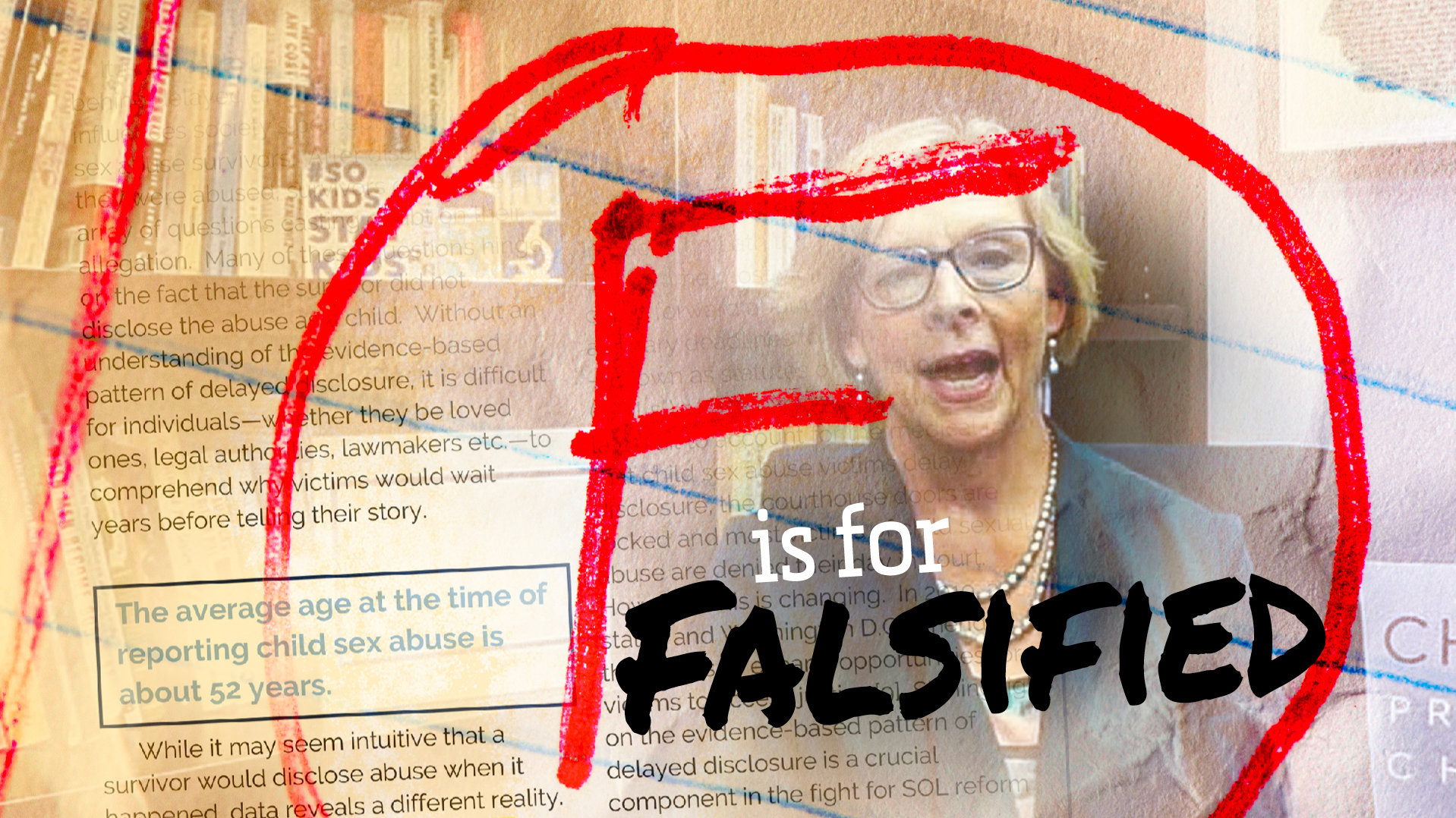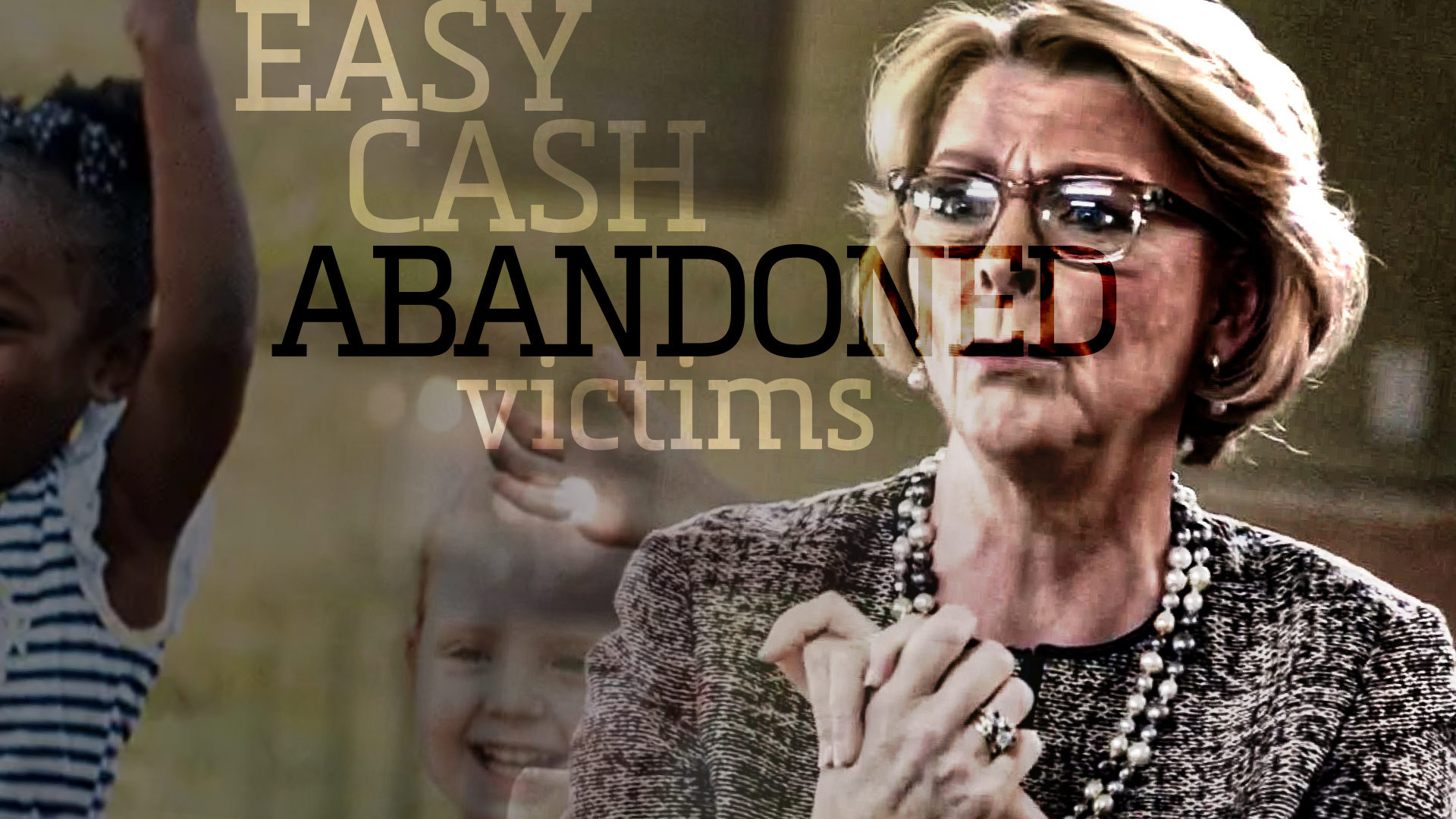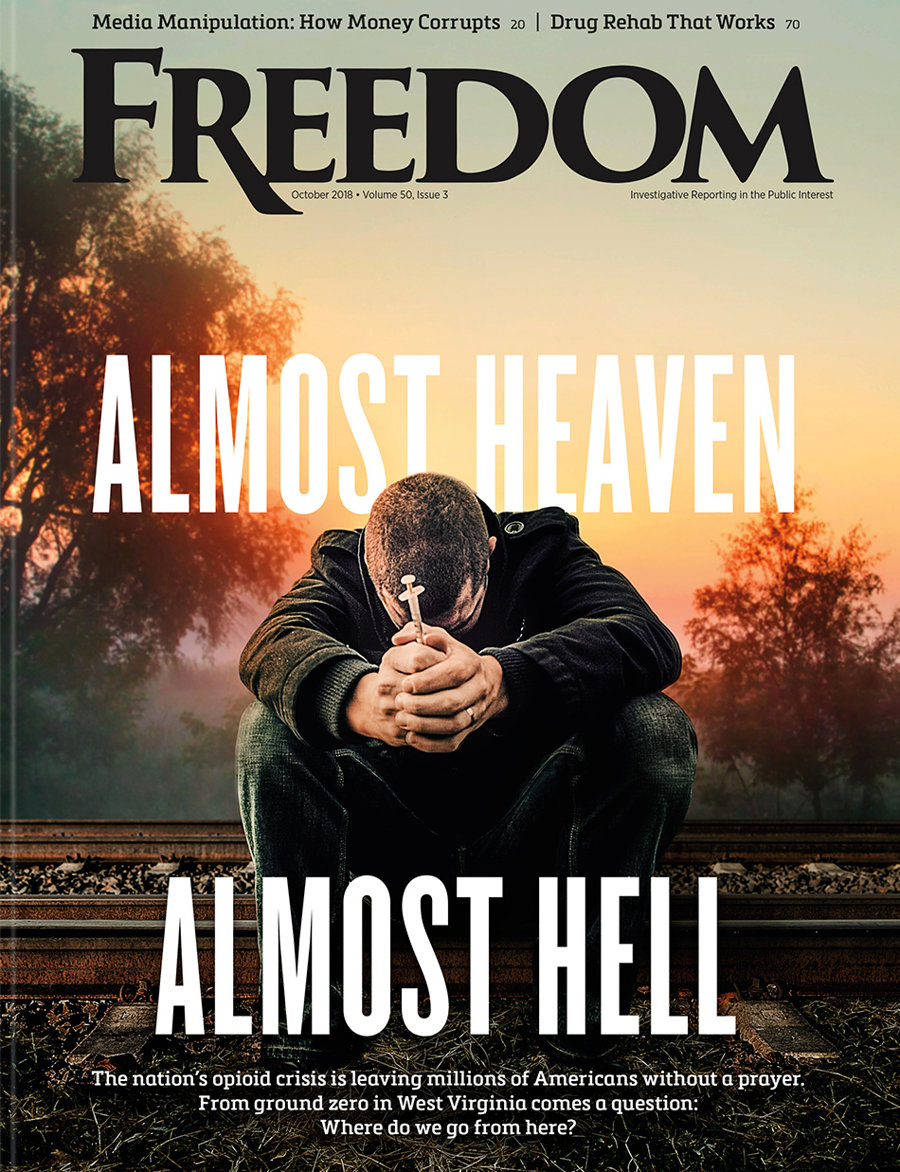In state after state, the Philadelphia-based attorney and her organization, Child USA, have lobbied to change the statute of limitations (SOL) for adult victims of child sex assault, opening gates for older claims, even from decades ago, to be filed as civil lawsuits.
To be clear, some adult victims of childhood sex abuse did not come forward and seek civil justice against their alleged abuser before the statute had expired. But Hamilton has used that to push legislatures to drastically extend SOLs or eliminate them altogether.
Yet mounting evidence and sources familiar with Hamilton reveal that her misleadingly-named organization and its SOL-altering campaign have little to do with children, but nearly everything to do with helping lawyers make millions representing adult victims whose claims involve wealthy institutions, such as the Catholic Church and Boy Scouts of America.
Hamilton and her Child USA declare as universal fact that child sex abuse victims don’t disclose their abuse until an average age of 52....She’s wrong.
Changes to civil SOLs have been made in over half the states in recent years. It has fueled a bonanza for dozens of law firms that also happen to be the mainstay financial supporters of Child USA, from which Hamilton draws a six-figure salary.
To convince legislators to extend or eliminate SOLs, Hamilton and her Child USA declare as universal fact that child sex abuse victims don’t disclose their abuse until an average age of 52—an age significantly beyond limits set in many states.
She’s wrong.
Since 2019, Hamilton has pounded legislators with oral and written testimony citing her “best science” that indicates victims don’t disclose their abuse until that average age of 52. She has posted the figure on the Child USA website, including in a “factsheet.”
Kathryn Robb, executive director of Hamilton’s lobbying arm Child USAdvocacy, parrots Hamilton’s “best science” mantra and 52 as the average age of disclosure.
“The 52-year figure is sort of the foundation of this entire push to eliminate completely statutes of limitations,” said one national legal expert who has testified against SOL reform legislation, and asked not to be identified.
The number has been so pervasive and persuasive that backers of a recently rewritten bill proposed in the state of Michigan, where the current SOL in similar cases is 28 years old, upped their target age limit for those filing civil lawsuits to 52—based solely on the “science” that Hamilton and Robb have advanced.
Evidence shows that Hamilton’s number is hogwash. She claims it’s based on a German study, which said no such thing.
Of 1,050 vetted respondents, the average age of those who happened to give their age was 52.2 at the time they called in to the hotline. Nowhere does the study indicate how old the callers were when they first discussed, disclosed or were consciously aware of their abuse.
In fact, the study was simply a call-in exploratory survey conducted by the German government, which asked respondents to discuss their experiences of alleged abuse in institutional facilities.
Of 1,050 vetted respondents, the average age of those who happened to give their age was 52.2 at the time they called in to the hotline.
Nowhere in the results of the study does it indicate how old the callers were when they first discussed, disclosed or were consciously aware of their abuse.
And in an ironic twist, the study concluded that suspension or elimination of SOLs based on the results “cannot be supported.”
Hamilton never mentions those facts.
Unfortunately, her “52” fallacy has been repeated time and again, and legislators have mistakenly trusted her, and acted on it.
An examination of the German study Hamilton relies on reveals just how false that number really is.
The study is based on data collected during an initial phase between April 2010 and March 2011, and an additional five-month phase that extended to August 2011, by a center organized under the German government-appointed Independent Commissioner for Reappraisal of Child Sex Abuse. The center advertised in mass media and through social service agencies and established a hotline allowing victims to call in, anonymously if they wished, to discuss their experiences. Victims could also use standard mail or email to contact the data collectors.
The reporting was conversational, with no specific questions or templates for gathering personal information, such as how old they were when they were abused, or at what age they first told someone about their abuse. Instead, respondents were free to talk about whatever they felt was relevant.
Not only is there no evidence that victims were only able to grasp and talk about their abuse for the first time at the average age of 52, but there is evidence that many disclosed earlier than that. In addition, the original 2011 report concluded that the information did not justify suspension or elimination of SOL for child sex abuse cases in Germany.
The study was limited to reports from victims alleging abuse by either clergy or other institutional employee, excluding abuse by relatives, family friends, neighbors, physicians and others.
At the end of the 17-month period, the study center wound up with over 4,500 data sets.
A research team at the University of Ulm later conducted a derivative analysis on a subset of 1,050 of the data sets. The resulting study, published in 2014, is what Hamilton cites: “Child sexual abuse in religiously affiliated and secular institutions (a retrospective descriptive analysis of data provided by victims in a government-sponsored reappraisal program in Germany).”
The report states that “the overall mean age at the time of reporting” to the government-sponsored study center was 52.2 years.
Nowhere does the original 2011 study or derivative 2014 study indicate whether those reports to the study center were the first time the victims had discussed their abuse, nor how old the respondents were when they first disclosed it.
To the contrary, the 2011 report reveals that more than 25 percent of total respondents said they previously sought medical and/or psychotherapeutic help, or other counseling resources, or had discussed their abuse with clergy, teachers, police, family members, friends or others.
So not only is there no evidence that victims were only able to grasp and talk about their abuse for the first time at the average age of 52, but there is evidence that many disclosed earlier than that.
In addition, the original 2011 report concluded that the information did not justify suspension or elimination of SOL for child sex abuse cases in Germany: “The requests for a retroactive suspension of the criminal statute of limitations for child sex abuse as well as for complete elimination of the statute of limitations for child sex abuse offenses cannot be supported.”
That did not deter Hamilton from exploiting the study for her own ends by falsifying and misrepresenting its findings.
There are, of course, real studies with real numbers and, although they disagree with each other on specific ages, none of them were found to agree with Hamilton’s imaginary “52” age of disclosure.
It is not the first time Hamilton has arbitrarily chosen a number that she thought would be effective in her attempts to sway legislators.
Originally, Hamilton capriciously chose 48 as the commonly accepted age at which child sex abuse victims would open up to family, friends or counselors about what had happened to them. When she was challenged during a hearing in the Michigan House Committee on Law and Justice in 2018, Hamilton said she had arrived at 48 by taking the difference between 18 (the age of majority) and 78 (the average life expectancy) and splitting it in half.
The Honorable Maura Corrigan, former chief justice of the Michigan Supreme Court, in a letter to the Michigan legislature blasted Hamilton’s claim of 48 years for a reporting age: “She does not cite any authority for the claim that the median age to disclose is 48. Instead, she seems to be saying that the median adult age of any adult is 48 years, as that is the halfway point between the age of majority and average life expectance.”
She called Hamilton’s references “questionable at best.”
Hamilton also had claimed one of her references showed that only 28 to 33 percent disclose during childhood, but the same study Hamilton had cited said that between 24 and 96 percent are said to do so.
On May 15, 2018, when Hamilton appeared before the Michigan House Law and Justice Committee, then-Representative (now Senator) Lana Theis accused her of “an intellectually dishonest approach.”
Hamilton later started using the false 52 “age of disclosure”—commonly referring to it as “best science”—and stuck to it.
Beginning in January 2019, the claim found wide entrance into testimony for U.S. legislative bodies. Hamilton wrote in support of the New York Child Victims Act, which passed: “We now know that the average age of disclosure for adult victims of child sex abuse is 52.” She repeated the claim in writing for Rhode Island’s Senate Committee on Judiciary.
Within a month, the German study had been upgraded in her vernacular to the “best science” in testimony given in Vermont. Hamilton also cited the study in support of extending or eliminating the SOL in New Jersey, Maryland and California.
In 2020, Hamilton stated to the South Dakota House Judiciary Committee, complete with graphic: “As the following graphic demonstrates, based on the best science, age 52 is the average age of disclosure for victims of child sex abuse.” She made similar statements in 2021 in a letter she wrote with Robb to legislators in North Dakota, again misemploying the German study as support.
Hamilton uses this fantasy number to bolster her argument that more child sex abuse victims would be able to seek civil legal redress with lawsuits….More lawsuits means more settlements, which means more percentage fees for the law firms that support her and Child USA.
Then, to leave no doubt that the statute of limitations was to blame, she further stated: “Yet, until recently, many states blocked criminal charges and civil lawsuits well before age 52. By the time most victims were ready to come forward, the courthouse doors were locked, shutting the victims out of justice.”
In 2022, Child USA posted a video on YouTube of Hamilton repeating the “52” age claim, perhaps hoping that a lie repeated often enough would soon be believed.
To this day, Child USA uses the figure of 52 years of age, despite being wrong.
There are, of course, real studies with real numbers and, although they disagree with each other on specific ages, none were found to agree with Hamilton’s imaginary “52” age of disclosure.
A University of Leiden, Holland, study in 2011, for example, said male child sex abuse victims would likely first disclose their abuse at an average of more than 10 years after the abuse, while females would do so much more quickly. Based on that data, the oldest age at which victims would likely disclose their abuse would be decades earlier than the age of 52.
Another study, from the University of Vienna in 2015, shows that the average age of first disclosure of child sex abuse was 28.6—based on the finding that the average age for the institutional abuse was 9.8 years old, and the average time of the delay of disclosure was 18.8 years.
In 2015, the University of Ottawa conducted a study of male child sex abuse which found the average age of first disclosure was 21.9. In addition, a subsequent study found that 77.9 percent of male victims disclosed their abuse, waiting an average of 15.4 years to do so.
So what is it about the pseudoscientific, and patently false, age of “52” that raises such serious and challenging questions about Hamilton’s methods of challenging SOLs in various states?
Simple. Hamilton uses this fantasy number to bolster her argument that more child sex abuse victims would be able to seek civil legal redress with lawsuits, at least until they reach the age of 52.
In fact, she has said she wants SOLs for child sex abuse cases eliminated entirely—which would mean even more lawsuits.
More lawsuits means more settlements, which means more percentage fees for the law firms that support her and Child USA.
Rachel Cichon, Chief of Staff for Michigan State Rep. Julie Brixie, a sponsor of the recent Michigan legislation, told Freedom they rewrote the bill raising the age to file a civil suit to 52 based on Child USA’s supposed research.
Cichon said they were influenced by the fact several other states—where Hamilton and Robb have drummed their fallacious “best science” into legislators—have used the age of 52 in their legislation.
And that they had trusted Child USA.
“We picked it for that reason,” she said of Marci Hamilton’s false number.
Watch for Part VI of this Investigative Series.






















